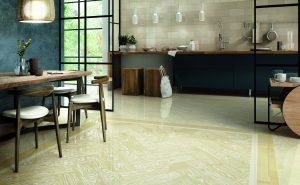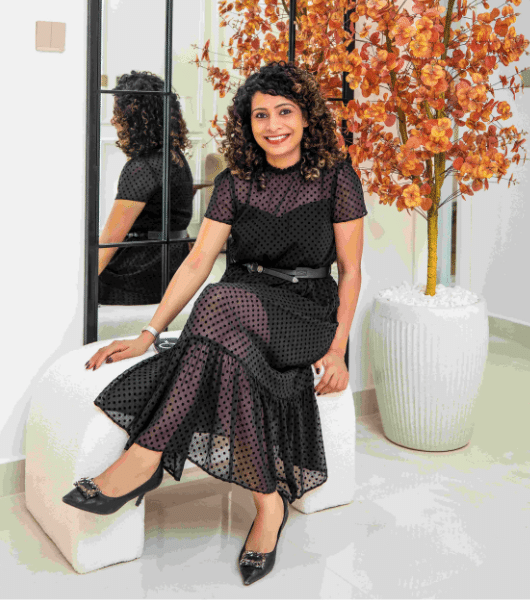Design Middle East meets provocative Dutch designer Job Smeets
The PoPJob collection is unlike any other product within the ceramic surfaces sector. The tiles’ shiny, smooth surface and vibrant colour intensity is obtained through a technique called ‘twin surface’, which involves coupling a pre-vitrified layer of high-density technical porcelain with a thick layer of crystalline glass, while the pigmented and  decorated layer is kept on the inside. The result is a highly glossy product with an intense pigmentation that enhances the chromatic saturation effect, and the layers that make up the PoPJob tiles are clearly visible when the piece is cut crosswise.
decorated layer is kept on the inside. The result is a highly glossy product with an intense pigmentation that enhances the chromatic saturation effect, and the layers that make up the PoPJob tiles are clearly visible when the piece is cut crosswise.
Smeets is full of praise for Mirage’s production standards and attention to detail. For instance, the brick-effect wall tiles appear to be crumbled around the edges.
“Those thing, they make it Pop – they make it archetypal and iconic, I think. And what I also like are the colours. A pink floor – come on! I mean, who has a pink floor?”
Smeets says he and Tynagel tried to create the most crazy colours possible” within the constraints of the brief of having to make a mass-produced, commercially viable product. A variation on the theme had already been used in Paris catwalk shows and by Dutch National Ballet.
Fame doesn’t really mean anything but sometimes you can use it for creativity
“To be honest, we already had these designs and had used them for different exhibitions
around the world,” Smeets says.
“We kind of altered them to make an industrial product for Mirage.” Smeets says he doesn’t set out to shock people, but feels it’s nevertheless good to push the boundaries of acceptability.
“I think, in the world of tiles this will be a very extreme collection. For me, it’s quite normal but for a ceramic tile company it must be really like edgy work. You know, ‘Will this work?’”
While Studio Job is most famous for its sculptures, he stresses he’s not averse to surface
pattern design. “We’re not afraid of two dimensions. Whether it’s one dimension, two dimensions, three or 25, dimensions, I’m OK as long as the product’s good.”
He adds: “I always think in spaces. When you have a bronze sculpture standing in a room, how is the rest of the room looking? And that floor underneath, the walls, the wallpaper, the tiles. It’s how we play. That’s why we are designers.








